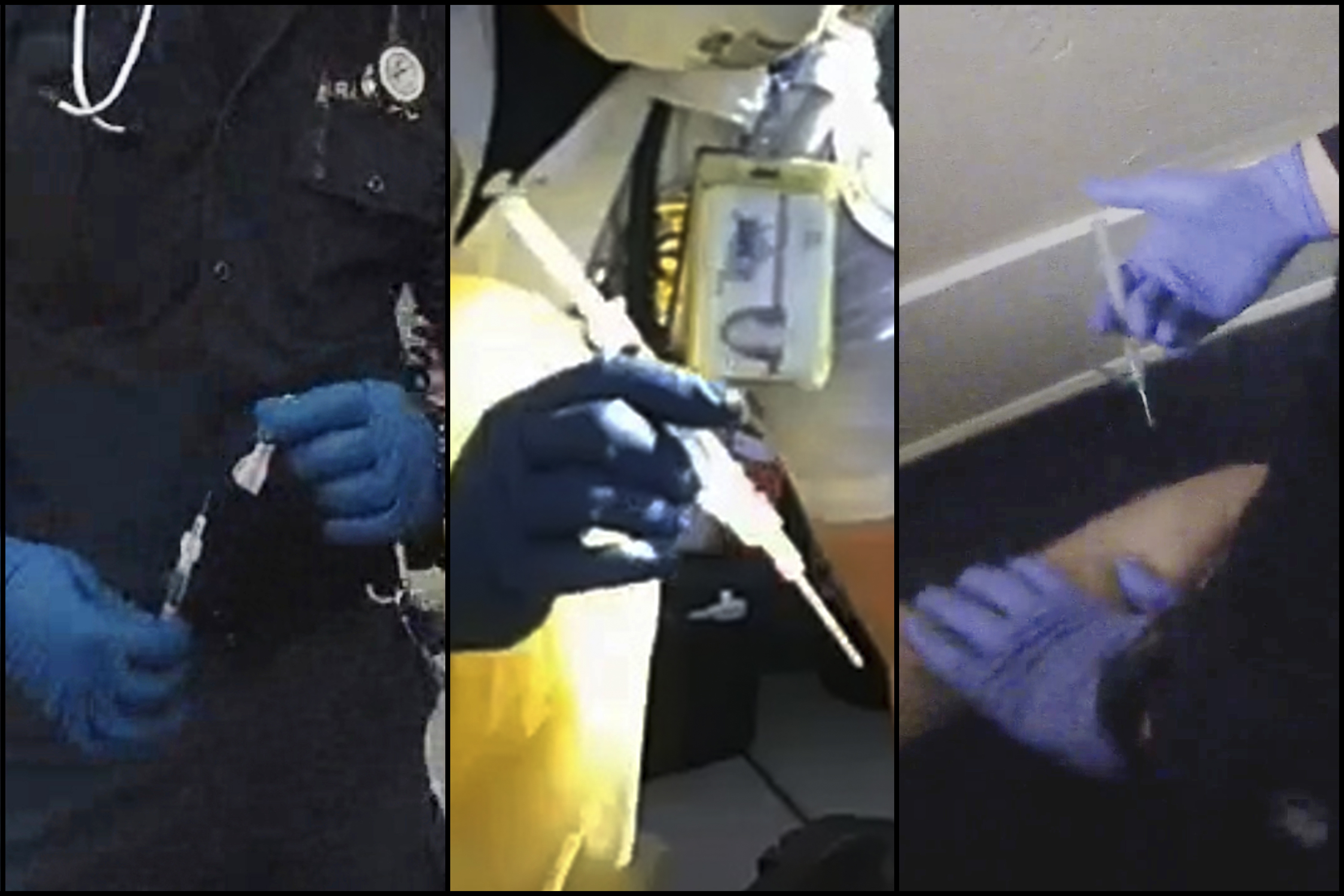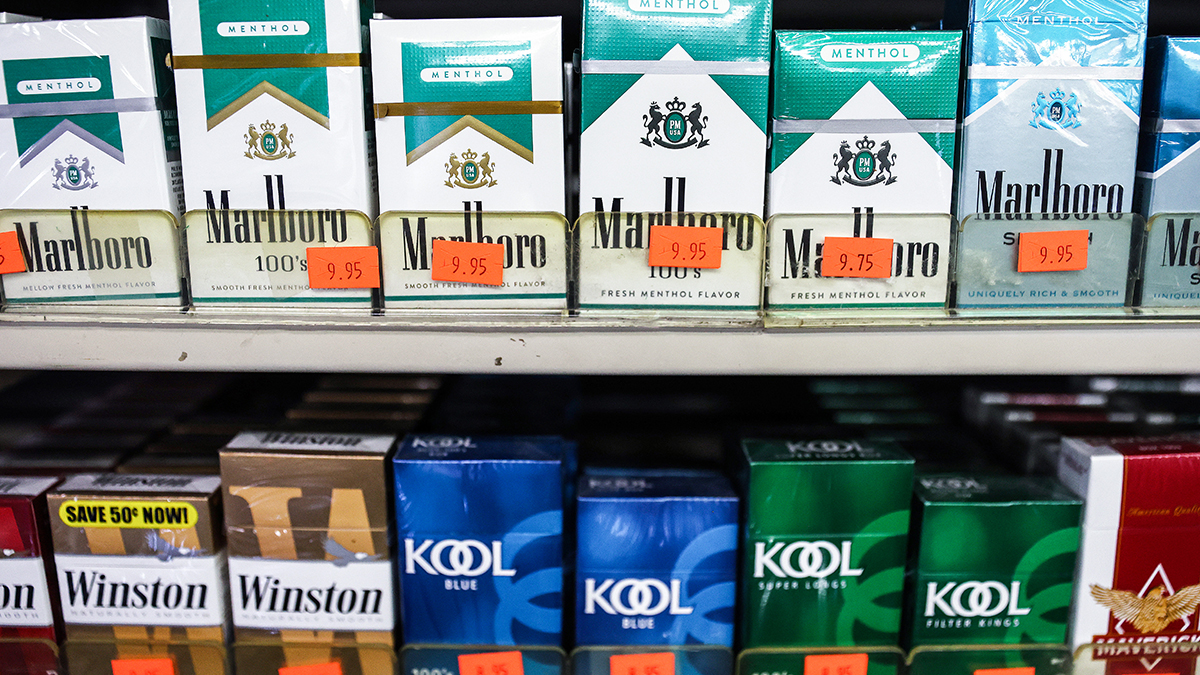Ashley Arentz is a political unicorn.
The 28-year-old Marine from Jacksonville, North Carolina, didn't vote in 2016, and she wasn't even registered to vote in the state. But there she was on Monday, standing in line for hours in the 90-degree heat waiting to enter President Donald Trump's rally in Fayetteville. That made her a golden target for the volunteers in day-glow yellow T-shirts working to register new voters.
Arentz said she likes the president because he's "just being straightforward."
She filled out a registration form on the spot.
Less than 14 months before Election Day, the president's team is banking his reelection hopes on identifying and bringing to the polls hundreds of thousands of Trump supporters such as Arentz — people in closely contested states who didn't vote in 2016. The campaign is betting that it may be easier to make voters out of these electoral rarities than to win over millions of Trump skeptics in the center of the electorate.
It's a risky wager borne of political necessity, and helps explain Trump's provocative communications strategy, from his attacks on the media to his racially polarizing rhetoric. Trump, aides and allies say, knows he needs to fire up his supporters, and anger is a powerful motivator.
"People trying to persuade swing voters are probably wasting their time because nearly all voters have already put their jersey on," said GOP strategist Chris Wilson. "Trump needs to bring more of his fans onto the field."
U.S. & World
Tens of millions of Americans choose not to vote in federal races every two years. The president's campaign is determined to turn out the Trump supporters among them. It views them as an untapped stash of Republican support that can help him overcome stubbornly low poll numbers and his difficulties in winning over voters in the shrinking political center.
"There's a new math spurred by a new candidate at the top of his ticket," Trump campaign senior political adviser Bill Stepien told reporters. "And I think we need to throw out the old way we look at how elections are won and lost."
That's not to say reaching them or getting them to vote for Trump will be easy.
The surest predictor for whether someone will vote in the future is whether that person has voted in the past. This political truism has long informed campaign strategies.
Still, attempting to shape the electorate is nothing new.
Barack Obama's campaign in 2012 shocked Republican opponents when it attracted Democrats who didn't vote in 2008. George W. Bush's campaign relied on the same tactic in 2004. But both campaigns tried to expand their bases while also focusing on trying to claim more voters in the center.
"The strategy was never one of simply looking at identifying red Republicans and getting them out to vote," said Karl Rove, Bush's strategist. "It was also a campaign of addition and persuasion."
Trump's gamble comes in deemphasizing the persuasion game as it focuses on boosting turnout.
The Trump campaign and the Republican National Committee have held events geared at reversing an erosion of support for the GOP among women and Latinos. But the central message of the campaign — as delivered by Trump, its de facto chief strategist and spokesman — is targeted at those who already support him.
At campaign rallies such as the one in North Carolina, the Trump campaign, the RNC and an authorized super political action committee work the long lines outside to register voters.
At a February rally in El Paso, Texas, the Trump campaign says, two-thirds of registrants had voted in two or fewer of the previous four federal elections. Before a June rally in Orlando, a geo-targeted digital campaign by a Trump super PAC directed about 3,000 people to the state's voter registration website.
"We know from data gathered from rallies that a significant percentage of rally registrants and attendees have voted infrequently in federal elections, but they are motivated to come out to see President Trump," said Trump campaign communications director Tim Murtaugh.
The key for Trump is to find the right nonvoters — those who already support the president. Overall, those who don't vote tend to be younger, nonwhite, less educated and more likely to vote for Democrats than those who regularly cast ballots. A Pew Research Center analysis of survey data found that the composition of registered voters who did not vote in 2016 skewed Democratic vs. Republican, 55% to 41%.
Trump's campaign has vast sums at its disposal and the GOP's trove of political and consumer data on all eligible voters in the country provides the pro-Trump effort a head start. The task is to identify likely Trump supporters in places such as Escambia County in Florida's Panhandle, where more than 75,000 eligible voters didn't cast ballots and those who did voted for Trump by a 3-to-2 margin. Trump won the state by 112,000 votes.
In Michigan, which Trump carried by 11,000 votes, there is opportunity in places such as the GOP stronghold of Ottawa County west of Grand Rapids. As many as 50,000 eligible voters didn't cast ballots in 2016, according to an Associated Press analysis of voter data, and Trump won the county by a 2-to-1 margin.
But if Trump's strategy is to pay off, his allies have a lot more work to do. Between 2016 and 2018, Michigan counties that backed Trump in 2016 added more than 44,000 people who were eligible to vote, but voter registrations increased by just 622 people.
Trump can't turn out all the eligible voters, and there's no guarantee that those they do reach will vote for Trump. But the president's team is betting that bringing more voters in will pack more of a punch than converting the ballot-going faithful.
"You have a massive pool of people who are less participatory and the more of those people you can engage into the election, the better your chances of victory are," said Brian Walsh of the Trump super PAC America First Action. "You're still going to try to move those swing voters, but how well you need to do is vastly different depending on how many people you bring in."
If all goes according to plan, Walsh said, Trump could lose the whole swing vote and still win the election.
The strategy makes some congressional Republicans wince. They fear the emphasis on nonvoters will further jeopardize Republican candidates, especially for the Senate, who need centrists to win their competitive races.
In Michigan's St. Joseph County, a heavily agricultural and reliably Republican region in southwest Michigan that Trump won in 2016, GOP Chairman Rodney Chupp is on the hunt for new recruits.
The 47-year-old insurance agent predicted Trump will win back the support of some of the Christian conservatives who sat out the race last time or who were among the roughly 1,000 people in the county to support a third party candidate.
"People in our county are warmer toward Trump, in a lot of ways, because they're starting to see results they like," Chupp said. "I think a message of 'Look at the results Trump is getting,' could motivate some folks."
The much tougher task will be turning out some of the 20,000 people who didn't make it to the polls in 2016 out of the county's nearly 45,000 eligible voters.
Is it possible to get even 1,000 of them to turn out for Trump next fall?
"I don't know," Chupp said. "I just don't know."
Associated Press writers Josh Boak and Hannah Fingerhut contributed to this report.



